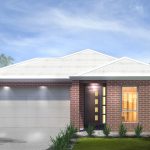This is how Millennials will drive future housing opportunities
As the housing markets in Australia’s major cities keep changing and growing, it’s crucial to realize that the homes constructed in the past may not match the needs of future homes.
As we’ve often said, our changing demographics will drive the shape of our housing markets and these long-term influences will be more important than the short-term fluctuations caused by interest rates.
Ben Carterm Research Consultant at Charter Keck Cramer (CKC) recently explored the demand being created for various types of dwellings, and in various locations, across the capital cities of Australia and in particular Millennials and the demands created by this segment of the market as they transition into the next stages of their lives.
But first, who are millennials?
Millennials are those born between 1981 and 1996.
Many of them were actually born to Baby Boomers and grew up in their parents’ detached houses in the inner, middle, or outer parts of Australia’s major cities.
However, things have changed over the past few decades.
Australia’s population has been rapidly growing leading to the expansion of urban areas in the capital cities.
These expanded areas today make up what we call the “Middle” Rings” of our cities.
Like every other generation before them, Millennials are quite different from their Baby Boomer parents.
They tend to get married and have children later in life, travel at an earlier age, switch careers more frequently, and stay in jobs for shorter periods compared to their parents.
But what’s most relevant is their different housing preferences.
Due to various factors, such as affordability constraints and personal choices, Millennials have different ideas about where and how they want to live.
This will drive the demand for different types of homes across the capital cities in the coming years and even decades.
Millennials have moved out of the family home
As Millennials leave their parents’ homes, they face a crucial decision: where to live, how much to pay for housing, and what type of dwelling to choose.
This choice becomes particularly challenging in cities like Sydney, Melbourne, and Brisbane on the East Coast, where house prices are among the highest in the country.
In their research Charter Keck Cramer noted that many Millennials have over the last decade been price and product “takers” given they have not (yet) reached peak earning capacity in their careers.
Due to this, many Millennials have been displaced from the Middle Rings of the capital cities because there is an absence of suitable housing choice at price points and weekly rents that meets their financial and lifestyle needs.
It is also important to understand that according to the most recent 2021 ABS statistics, a large percentage of Millennials that have moved out of the family home rent the dwelling in which they are living:
- 53% in Sydney,
- 44% in Melbourne,
- 47% in Brisbane
The statistics further show that over the last 15 years (2006-2021) a much larger percentage are also now living in high-rise apartments with 4+ levels:
- 27% up from 12% in Sydney,
- 12% up from 3% in Melbourne,
- 9% up from 2% in Brisbane
CKC also noted that for many Millennials, renting as well as living in either a townhouse or an apartment is a forced choice as they have simply been priced out of the housing markets across many of the capital cities (particularly Sydney and Melbourne).
But here’s the thing: not all Millennials are keen on committing to a 30-year mortgage
Some of them prefer investing their money in the share market and leading a more transient lifestyle.
On the other hand, there’s a group that is open to living in apartments or townhouses for a longer period, especially if these dwellings are well-constructed and conveniently located near their workplaces and amenities.
Let’s not forget that a significant portion of Millennials actually come from overseas.
They bring along their own living preferences, which can vary depending on their cultural background.
Some already have a preference for higher or medium-density living due to their ethnic influences.
What’s next for the next 10 years?
CKC pointed out that it is important for Government, as well as the development industry to appreciate that as at the 2021 Census, Millennials represented the same proportion of the population as Baby Boomers (both at 21.5% of the Australian population).
This is the first time this has occurred in Australia and presents a large demographic and structural shift in the population which will flow into the housing market.
Their insights also explained that over the next decade, Millennials will begin to outnumber Baby Boomers and will start to move into peak earning capacity as well as continue to have children.
This change in financial circumstances and lifestyle will continue to drive demand for dwellings in the Middle Rings close to some of the best schools, hospitals and amenities.
This is at the same time as their Baby Boomer parents will need to make financial and lifestyle decisions about their own housing requirements.
CKC highlighted that as it stands, many Baby Boomers don’t have suitable dwellings to move into and will remain locked in the Middle Rings in their detached houses whilst Millennials also don’t have suitable dwellings to move into and will remain locked out of the Middle Rings.
Worse still is that many Baby Boomers will be forced to live far away from their children and grandchildren which is an unacceptable (but avoidable) outcome.
Dwelling opportunities for Millenials
According to Charter Keck Kramer, there are several opportunities that have begun to emerge and will continue to gain momentum as Millenials move on to their next stage in life:
1. Build to Rent (BTR) apartments
Given affordability issues in Sydney, Melbourne and Brisbane, BTR has a significant role to play to house a large segment of the population.
As many Millennials both rent and also already reside in higher-density dwellings, they will be the first adopters of BTR (vertical and horizontal) and their living preferences will drive demand for this product.
In due course, it is anticipated that different ‘tiers’ of BTR will be introduced as the market de-risks and it is anticipated that more affordable BTR will be delivered (much like has occurred in both the USA and the UK) across the capital cities.
Charter Keck Cramer’s research to date also indicates that some of the largest opportunities for BTR exist in the Middle Rings of several of the capital cities.
2. Build to Sell (BTS) owner-occupier apartments
Given affordability issues in Sydney, Melbourne and Brisbane and the difficulty in saving a deposit for a detached house, apartments are a good starting point for many Millennials to get onto the housing ladder.
They also offer the most affordable weekly rents which can start to address some of the issues with housing affordability given they are typically delivered into the lower to the median price and rent quartiles of a housing sub-market.
3. Townhouses and terrace houses
This product type will allow many Millennial families to enter into the Middle Rings of the capital cities and be close to schools, infrastructure and amenities.
They are also an excellent compromise and a stepped change response to density given they are typically delivered over 2 or 3 levels.
4. Detached houses
The great Australian Dream is still alive to many Millennials.
The greenfield markets must still play an important role across all the capital cities to cater to those buyers who aspire to live in this form of housing.
Opportunities for the Government
CKC recommended that all sides of politics, and all levels of Government, are encouraged to start making decisions with both Millennials and Baby Boomers in mind.
This requires a change of mindset and understanding of both the competing and complementary needs of Millennials and Baby Boomers respectively.
They also highlighted that the Government need to start to facilitate the supply of additional and diverse dwellings to open up many locations across the capital cities.
The government is encouraged to take a proactive, brave and longer-term approach to address this issue.
Changes to planning schemes that allow greater certainty and speed to market and greater forms of housing density (i.e. townhouses, terrace houses, BTS apartments and BTR apartments) are essential.
Changes to various taxes and charges (such as the removal of stamp duty/land transfer duty which is an incredibly inefficient tax) are also necessary to facilitate the cost-effective transition of Millennials (and Baby Boomers) into different types of dwellings.
Furthermore, CKC encouraged the Government to realise that decisions made today will impact the housing markets of tomorrow.
Having studied several housing sub-markets, they observe that decisions relating to planning and planning schemes in fact take one or more housing market cycles (7-10 years) to flow through at scale, whereas changes relating to tax settings that facilitate the production of new dwelling take anywhere from 2-4 years to flow through at scale.
Opportunities for developers and financiers
According to CKC, many of the capital cities are currently experiencing their strongest levels of population growth on record (through overseas migration).
They noted that these residents need a place to live and substantial opportunities are in locations such as the Middle Rings where land values are high enough, and land parcels large enough, to support feasible development of various forms of housing at scale.
Furthermore, CKC said that the development and finance industries are also encouraged to continue to seek out innovative housing solutions and finance models that meet the demands and respond to the lifestyle and financial needs of the Millennial segment of the market.
SOURCE: Michael Yardney’s propertyupdate.com.au By Bryce Yardney 23/8/23







